Pianificare un viaggio sulla neve non deve essere stressante. Ecco l'essenziale: prenota presto, confronta le opzioni e semplifica dove puoi. Dai voli agli hotel e ai biglietti per gli impianti, ci sono modi intelligenti per risparmiare e evitare stress. Che tu stia andando in Colorado o Vermont, questi consigli ti aiuteranno a sfruttare al massimo il tuo viaggio:
- Inizia Presto: Prenota voli e hotel con 6–12 mesi di anticipo per le migliori offerte. Periodi di punta come Natale o vacanze scolastiche? Punta a 9–12 mesi.
- Voli: Usa strumenti come Google Flights o Skyscanner per trovare offerte. Controlla gli aeroporti vicini per prezzi migliori e maggiore comodità.
- Hotel: Le strutture ski-in/ski-out sono super comode ma più costose. Opzioni economiche più lontane dalle piste possono farti risparmiare molto.
- Skipass: Acquista sempre online in anticipo. I pass multi-giorno o stagionali spesso ti fanno risparmiare più dei biglietti giornalieri.
- Attrezzatura: Evita il fastidio dell'attrezzatura ingombrante. Opzioni compatte come Snowfeet rendono il viaggio più facile e fanno risparmiare sulle tariffe di noleggio.
- Pacchetti: Combinare voli, alloggio e skipass può farti risparmiare tempo e denaro, ma confronta i costi con la prenotazione separata.
La chiave? Pianifica in anticipo, resta flessibile e prepara il bagaglio con intelligenza. Immergiamoci nei dettagli per rendere il tuo viaggio sulla neve fluido e divertente!
Una guida per prenotare un viaggio sulla neve 🎿
Prenotare voli per il tuo viaggio sulla neve
Raggiungere le piste senza spendere una fortuna o affrontare stress di viaggio inizia con una pianificazione intelligente. Il trucco è sapere come trovare voli economici, quando prenotare e come viaggiare leggeri.
Come trovare voli economici per le destinazioni sciistiche
I prezzi dei voli verso le località sciistiche possono variare molto a seconda di quando viaggi e di quanto sei flessibile. Volare a metà settimana invece che nei weekend di solito fa risparmiare, evitando i giorni di viaggio più affollati durante la stagione sciistica.
Strumenti come Google Flights, Kayak e Skyscanner ti permettono di cercare con date flessibili, facilitando l'individuazione di opzioni più economiche. Per i voli nazionali, prenotare con diverse settimane di anticipo è la tua migliore chance per trovare un affare.
Non dimenticare di ampliare la ricerca includendo aeroporti vicini. I grandi hub spesso offrono più voli e prezzi competitivi, mentre gli aeroporti regionali più piccoli possono ridurre i tempi di viaggio a terra ma potrebbero costare un po' di più.
Considera anche voli notturni o di prima mattina. Tendono a essere più economici delle opzioni in orari di punta, lasciandoti più soldi da spendere sulla montagna.
Una volta trovato l'affare migliore, assicurati che l'aeroporto scelto ti porti il più vicino possibile alle piste.
Scegliere aeroporti vicino alle località sciistiche
Scegliere l'aeroporto giusto può rendere il viaggio più fluido e farti risparmiare tempo (e denaro) sui trasporti a terra. Per esempio, Denver International (DEN) è un ottimo punto di accesso alle stazioni sciistiche del Colorado, offrendo molte opzioni di volo insieme a navette e noleggi auto.
Se stai andando a Vail o Beaver Creek, Eagle County Regional Airport (EGE) è ancora più vicino. Anche se potrebbe costare di più o subire occasionali ritardi meteorologici, la guida più breve fino alla località può valerne la pena.
In Utah, Salt Lake City International (SLC) è una scelta top per la sua vicinanza a Park City, Alta e Snowbird - tutti a breve distanza in auto. Per le località sciistiche del Lago Tahoe in California, Reno-Tahoe International (RNO) e Sacramento (SMF) offrono buone opzioni, bilanciando accessibilità e costi.
Aeroporti più piccoli come Aspen (ASE), Jackson Hole (JAC) e Sun Valley (SUN) ti portano proprio nel cuore dell'azione ma spesso hanno prezzi dei biglietti più alti e meno voli disponibili. Se la comodità è la tua priorità, potrebbero comunque valerne la pena.
Viaggiare leggeri con l'attrezzatura Snowfeet*
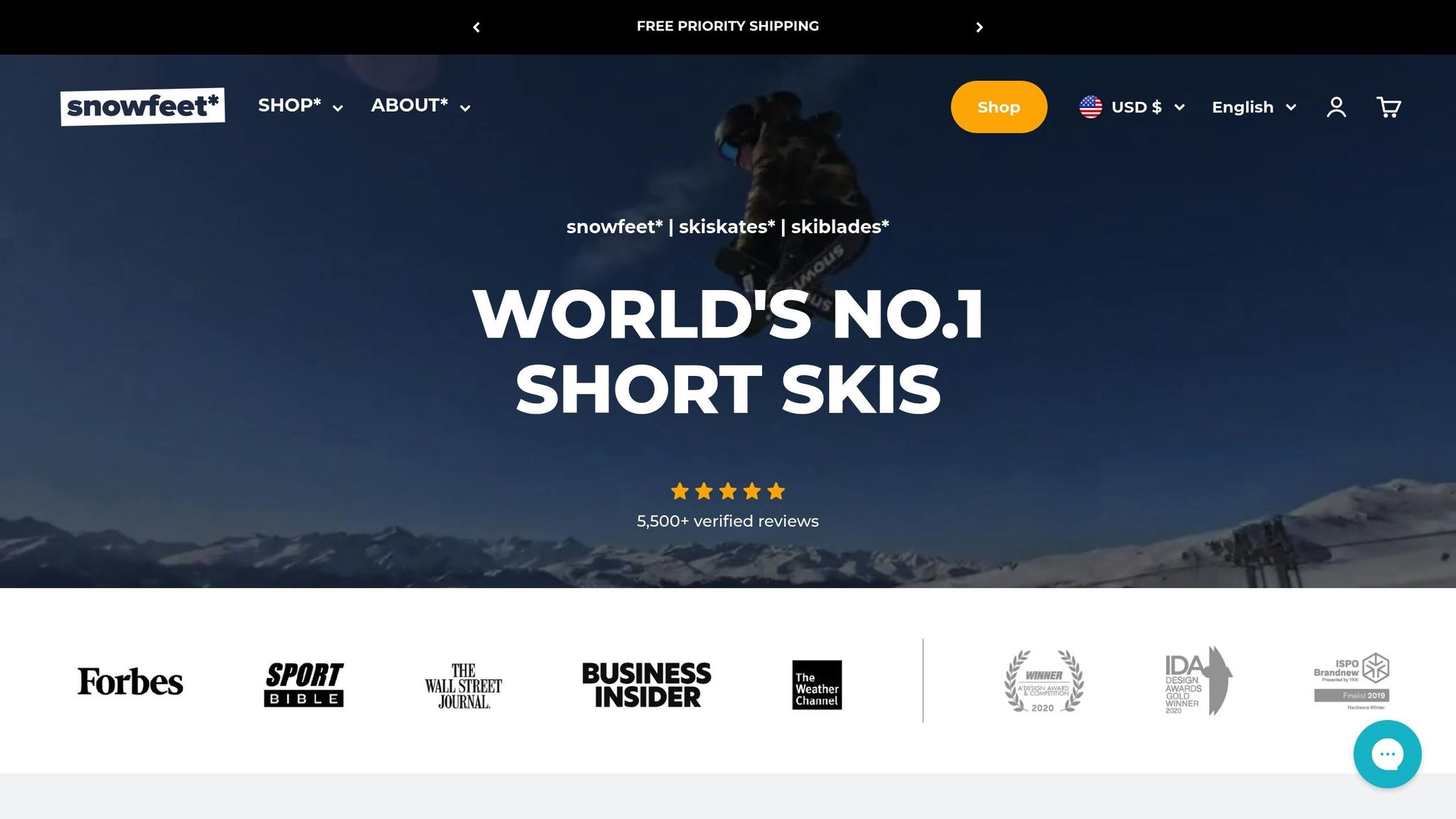
Portare l'attrezzatura da sci tradizionale può essere una seccatura - per non parlare delle tariffe extra che le compagnie aeree applicano per i bagagli oversize. Ma c'è un modo per rendere il viaggio più semplice.
Snowfeet* offre attrezzature compatte e leggere facili da imballare. La loro gamma include sci corti da 120 cm, skiblades da 99 cm e 65 cm, e skiskates ultra-compatti da 44 cm e mini skates da 38 cm. Sono progettati per entrare in normali bagagli da stiva - o anche in bagagli a mano - così puoi evitare le tariffe per bagagli oversize e le lunghe attese al nastro.
Non solo l'attrezzatura Snowfeet* alleggerisce il carico, ma è anche adatta ai principianti. Il design più corto la rende più facile da controllare, dandoti più fiducia sulle piste. Quindi, invece di lottare con attrezzature ingombranti, puoi concentrarti a goderti il tempo sulla neve.
Scegliere hotel vicino alle stazioni sciistiche
Dove alloggi può fare la differenza per la tua vacanza sugli sci. Una buona posizione con facile accesso alle piste e servizi utili può aggiungere tanto divertimento (e comodità) alla tua avventura.
Tipi di alloggi
Chalet ski-in/ski-out sono la massima comodità. Questi posti ti permettono di scendere direttamente sulle piste. Ad esempio, il Park Hyatt Beaver Creek Resort & Spa offre questa esperienza di lusso. Inoltre, stanno offrendo uno sconto del 20% sui soggiorni invernali 2025-26, rendendo più facile concedersi un piacere.
Hotel vicino alle piste sono un ottimo compromesso. Sono vicini agli impianti di risalita, offrono viste mozzafiato sulle montagne e bilanciano comodità e convenienza. Di solito, è solo una breve passeggiata fino al rifugio base.
Alloggi nel villaggio ti mettono proprio nel cuore dell'azione. Soggiornare in posti come Whistler Village significa essere a pochi passi da ristoranti, negozi e vita notturna. Il Fairmont Chateau Whistler, per esempio, offre fino al 20% di sconto per soggiorni invernali se prenoti entro il 30 novembre, 2025. Probabilmente avrai bisogno di una breve corsa in navetta per raggiungere le piste, ma l'atmosfera après-ski è imbattibile.
Opzioni economiche sono perfette se vuoi risparmiare. Gli hotel di catena più lontani dalle piste - come il Sandman Hotel Revelstoke - offrono sconti fino al 35% se prenoti entro il 15 novembre. Certo, sarai più lontano dall'azione, ma il risparmio può essere destinato agli skipass o a un ottimo pasto.
Per soggiorni più lunghi, considera opzioni come Margaritaville Lake Tahoe, che offre il 20% di sconto per prenotazioni di quattro o più notti. Un'altra ottima scelta è il Snowpine Lodge Alta, con sconti del 15% per soggiorni di cinque notti e del 10% per soggiorni di tre notti.
Una volta ristretto il tipo di alloggio, presta attenzione ai servizi che possono rendere il tuo viaggio ancora più fluido - specialmente se viaggi con l'attrezzatura leggera Snowfeet*.
Caratteristiche dell'hotel da cercare
Proprio come l'attrezzatura compatta Snowfeet* rende più facile viaggiare, scegliere un hotel con i servizi giusti può semplificare il tuo viaggio sulla neve. Ecco cosa cercare:
- Deposito attrezzatura riscaldato: Una salvezza per mantenere la tua attrezzatura Snowfeet* (o qualsiasi attrezzatura da sci) asciutta e pronta per il giorno successivo.
- Servizio navetta: Molti hotel offrono navette gratuite per le piste, risparmiandoti il fastidio di guidare o parcheggiare.
- Ristorazione in loco: Dopo una lunga giornata in montagna, cenare a pochi passi può sembrare un vero lusso.
- Vasche idromassaggio e spa: Perfette per rilassare i muscoli doloranti dopo aver sfrecciato sulle piste.
- Partnership per il noleggio: Alcuni hotel collaborano con negozi locali per offrire noleggi scontati consegnati direttamente in camera. Oppure, se viaggi con l'attrezzatura Snowfeet*, puoi evitare il noleggio del tutto, dato che è così facile da portare con te.
- Wi-Fi e aree workspace: Essenziali se hai bisogno di restare connesso o di lavorare un po', soprattutto perché la connessione internet in montagna può essere incostante.
Per risparmi extra, considera di combinare l'alloggio con skipass e altri servizi. Prenotare tramite grandi reti di località come Vail Resorts spesso offre vantaggi come garanzie sul miglior prezzo e sconti esclusivi per i possessori di pass. Per esempio, i possessori di Epic Pass possono ottenere un ulteriore 20% di sconto sugli alloggi tramite Epic Mountain Rewards.
Ecco un consiglio: prenota in anticipo. Pianificare in anticipo di solito significa tariffe migliori rispetto alle offerte last minute. Piattaforme come Ski.com offrono fino al 30% di sconto sugli alloggi se prenoti entro il 20 ottobre, e puoi risparmiare ancora di più combinando il tuo viaggio.
Acquisto di skipass e pass
Pianificare in anticipo l'acquisto degli skipass può rendere la tua vacanza più fluida e farti risparmiare qualche soldo.
Come acquistare skipass online o nelle località
Il miglior consiglio? Acquista i tuoi skipass online e fallo in anticipo. Molti siti delle località offrono sconti per acquisti anticipati, grazie ai loro sistemi di prezzi dinamici. Inoltre, con i biglietti mobili e la tecnologia RFID sempre più diffusi, puoi evitare le lunghe code alle casse. Basta scansionare il telefono o la tessera al tornello e sei pronto per partire.
Se stai cercando offerte, le piattaforme di terze parti potrebbero avere promozioni interessanti da controllare. Assicurati solo di leggere le condizioni su cancellazioni e rimborsi. I siti web delle località spesso offrono più flessibilità se i tuoi piani cambiano.
Per viaggi multi-giornalieri, considera pass che coprano diversi giorni o addirittura tutta la stagione. Questi spesso includono vantaggi come sconti su alloggi o noleggi, rendendoli un affare migliore rispetto all'acquisto di biglietti singoli.
Confronto tra pass giornalieri, multi-giornalieri e stagionali
Scegliere il pass giusto dipende da quanto tempo rimani. Un biglietto giornaliero è ottimo per una visita veloce o per provare una nuova località. Ma se stai pianificando un viaggio più lungo, i pass multi-giornalieri o stagionali possono farti risparmiare di più nel lungo periodo. Spesso includono anche extra come sconti su noleggi o alloggi. Per gli sciatori frequenti, i pass stagionali offrono accesso illimitato e vantaggi extra che possono renderli l'opzione più conveniente.
Ottenere più valore con l'attrezzatura Snowfeet*
Abbinare il tuo skipass all'attrezzatura Snowfeet* può portare la tua vacanza sulla neve a un livello superiore. Perché? L'attrezzatura Snowfeet* è compatta, leggera e ampiamente accettata sulle piste da sci - proprio come gli sci tradizionali. Questo significa che puoi usare il tuo skipass per esplorare sia le piste battute sia quei luoghi più tranquilli e fuori dai sentieri battuti che gli sci tradizionali potrebbero non raggiungere.
Un altro vantaggio? L'attrezzatura Snowfeet* è super portatile. Eviterai il fastidio del noleggio e le spese extra per attrezzature ingombranti. Quando gli impianti chiudono, il loro design facile da trasportare ti permette di passeggiare nel villaggio del resort o esplorare i sentieri vicini senza perdere un colpo.
In breve, aggiungere l'attrezzatura Snowfeet* al tuo viaggio non è solo una questione di comodità - significa sfruttare al massimo il tuo skipass e goderti più libertà sulla montagna.
sbb-itb-17ade95
Pacchetti per viaggi sciistici spiegati
I pacchetti per viaggi sciistici combinano voli, alloggio, skipass e noleggio attrezzatura, rendendo molto più facile pianificare il viaggio. Vediamo cosa è solitamente incluso e come assicurarti di ottenere il massimo valore.
Cosa è incluso nei pacchetti per viaggi sciistici
La maggior parte dei pacchetti sci include alloggio, skipass e noleggio attrezzatura, con alcuni che aggiungono extra come lezioni, trasferimenti aeroportuali o crediti per i pasti. Questi pacchetti coprono tipicamente da 3 a 7 giorni e variano da 800 a 2.500 $ a persona, a seconda della destinazione e dei servizi.
Ecco una rapida panoramica delle basi:
- Alloggio: Spesso hotel o condomini ski-in/ski-out vicino alle piste.
- Skipass: Di solito pass multi-giornalieri che danno accesso all'intera montagna.
- Noleggio attrezzatura: Include sci, scarponi, bastoncini e caschi per sci o snowboard.
Se sei un utente Snowfeet*, puoi saltare completamente i noleggi tradizionali. Con attrezzature compatte come Mini Ski Skates (250 $) o Skiskates (575 $), eviti le tariffe di noleggio giornaliere da 50 a 70 $. Questo può fare una grande differenza per risparmiare.
Alcuni pacchetti includono anche lezioni di sci, ottime per i principianti. Ma ecco il punto - i prodotti Snowfeet* sono molto più facili da imparare, quindi potresti non aver bisogno di lezioni. Questa flessibilità significa che spesso puoi modificare i pacchetti per adattarli meglio alle tue esigenze.
Extra come trasferimenti aeroportuali e crediti per i pasti sono comuni anche. Questi vantaggi possono farti risparmiare 100–200 $ su trasporti e ristorazione, specialmente in resort più costosi come Vail o Aspen.
Controllare i costi e il valore del pacchetto
Per assicurarti di ottenere un affare solido, confronta il prezzo del pacchetto con quanto costerebbe prenotare tutto separatamente. Ad esempio, se un pacchetto include 4 notti di alloggio, skipass di 3 giorni, noleggi e trasferimenti per 1.200 $, ma prenotando individualmente si arriva a 1.510 $, risparmi 310 $.
Detto questo, fai attenzione a spese nascoste e restrizioni. Alcuni pacchetti richiedono di prenotare voli tramite specifiche compagnie aeree, che potrebbero costare di più. Altri limitano la scelta delle camere o dei tipi di skipass.
- Pacchetti resort: Questi spesso offrono più flessibilità e offerte migliori. Per esempio, i pacchetti Epic di Vail Resorts ti permettono di usare i biglietti per gli impianti su più montagne e possono includere sconti su ristorazione e attività.
- Siti di terze parti: Piattaforme come Ski.com o SkiPackages.com potrebbero pubblicizzare prezzi base più bassi ma potrebbero addebitare costi extra per modifiche o cancellazioni. Leggi sempre le clausole, specialmente se prenoti durante i periodi di punta come il Presidents’ Day o le vacanze di primavera.
Un altro consiglio? Negozia! Se porti la tua attrezzatura (ciao, Snowfeet*), chiedi un pacchetto che escluda il noleggio. Le località sono spesso disposte a modificare le tariffe quando prenoti direttamente tramite il loro team di prenotazioni invece di usare sistemi online.
Il tempismo è tutto. Prenotare con 60–90 giorni di anticipo di solito ti garantisce le tariffe migliori. Detto questo, offerte last-minute (entro due settimane) possono offrire grandi risparmi se le località cercano di riempire le camere. Basta non contare su sconti durante i periodi di punta in posti popolari come Jackson Hole o Park City.
Infine, considera l'assicurazione di viaggio, specialmente per pacchetti più costosi. Con 50–100 $, l'assicurazione può coprire cancellazioni dovute a maltempo, malattia o altri imprevisti. Questo piccolo investimento può valerne la pena se il tuo viaggio costa più di 2.000 $ a persona.
Snowfeet* vs Attrezzatura Tradizionale per Sci e Snowboard
Quando si pianifica un viaggio sugli sci, scegliere l'attrezzatura giusta può fare tutta la differenza. Sci e snowboard tradizionali sono stati la scelta preferita per decenni, ma hanno alcuni svantaggi piuttosto frustranti. Pensa a trascinare sci lunghi 6 piedi in aeroporto o a passare ore a imparare con un'attrezzatura che sembra obsoleta. È qui che entra in gioco Snowfeet*, offrendo un approccio nuovo all'attrezzatura per sport invernali.
Gli sci tradizionali sono solitamente lunghi 150-190 cm (5-6 piedi), e gli snowboard variano da 140 a 165 cm. Ora confrontali con Snowfeet*, il cui modello più lungo è appena 120 cm, con la maggior parte delle opzioni che si collocano tra 38 e 99 cm. Questa differenza di dimensioni non riguarda solo la comodità - cambia completamente il modo in cui vivi gli sport invernali.
Snowfeet* vs Sci e Snowboard Tradizionali
Facciamo un po' di chiarezza. Ecco come Snowfeet* si confronta con l'attrezzatura tradizionale sulle cose che contano di più:
| Caratteristica | Sci tradizionali/Snowboard | "Prodotti Snowfeet*" |
|---|---|---|
| "Portabilità" | "5-6 piedi di lunghezza, richiede borse da sci, tasse aeree $75-150" | "Si infila in uno zaino, nessuna tassa bagaglio" |
| "Curva di apprendimento" | "Da settimane a mesi, lezioni consigliate ($80-120/giorno)" | "Da ore a giorni, design intuitivo" |
| "Compatibilità scarponi" | "Richiede scarponi specifici da sci/snowboard ($200-500)" | "Funziona con scarpe invernali normali o qualsiasi scarponi" |
| "Stoccaggio" | "Richiede portapacchi, ampio spazio di stoccaggio" | "Si adatta al bagagliaio dell'auto, all'armadio dell'hotel" |
| "Versatilità" | "Limitato a piste battute" | "Funziona su piste, parchi, sentieri e persino nei cortili" |
| "Fascia di prezzo" | "$400-1.200+ più scarponi e attacchi" | "$250-775 per set completo" |
I prodotti Snowfeet* sono una rivoluzione per i viaggiatori. Dimentica di trascinare una pesante borsa da sci in aeroporto o di pagare tasse per il bagaglio. I Mini Ski Skates si infilano direttamente nel tuo bagaglio a mano, lasciandoti più soldi per pasti migliori o alloggi.
L'apprendimento è un altro ambito in cui Snowfeet* brilla. Lo sci tradizionale spesso richiede lezioni che costano 80-120$ al giorno, e probabilmente avrai bisogno di diverse sessioni per sentirti a tuo agio. L'attrezzatura Snowfeet*, invece, è progettata per un controllo facile, grazie alla sua lunghezza più corta e al baricentro più basso. La maggior parte delle persone la impara in poche ore.
La compatibilità con gli scarponi è un altro vantaggio. Gli sci tradizionali richiedono scarponi rigidi e costosi che costano tra 200 e 500$ e sono scomodi da camminarci. Snowfeet* ti permette di usare i tuoi normali scarponi invernali o scarponi da snowboard, quindi non c'è bisogno di acquisti extra.
Quando si tratta di spazio, l'attrezzatura tradizionale occupa un sacco di posto. Ti servono portapacchi o un grande spazio di stoccaggio, cosa che può essere un problema - soprattutto se soggiorni in una località sciistica dove l'alloggio può costare più di 300$ a notte. L'attrezzatura Snowfeet* si adatta comodamente al bagagliaio della tua auto, all'armadio dell'hotel o anche sotto il letto.
Poi c'è la versatilità. Gli sci tradizionali sono ottimi sulle piste battute ma poco altro. I prodotti Snowfeet* funzionano quasi ovunque - piste da sci, parchi di terreno, sentieri escursionistici e persino nel tuo giardino dopo una nevicata. Ne farai molto più uso, sia che tu stia andando in montagna o semplicemente godendoti una giornata di neve a casa.
Il costo è un altro fattore importante. Un setup tradizionale può costare tra 750 e 2.100$, inclusi sci, scarponi e attacchi. I prodotti Snowfeet*, al contrario, vanno da 250$ per i Mini Ski Skates fino a 775$ per i loro Short Skis più lunghi - e questo per il set completo. Inoltre, gli sci tradizionali richiedono manutenzione regolare come la sciolinatura e l'affilatura dei bordi, che aggiunge 50-100$ a stagione. L'attrezzatura Snowfeet*? Praticamente nessuna manutenzione.
Per i viaggiatori in particolare, Snowfeet* risolve tanti problemi. Niente più sci danneggiati dalle compagnie aeree, attrezzatura a noleggio che non calza bene o viaggi limitati a causa di equipaggiamento ingombrante. L'industria dello sci ha a lungo promosso l'idea che più grandi siano meglio, ma Snowfeet* dimostra il contrario. Sci più corti significano migliore controllo, apprendimento più facile e, diciamolo, molto più divertimento. Se vuoi un'esperienza sportiva invernale più fluida e piacevole, Snowfeet* è la scelta giusta.
Rendi il tuo viaggio sugli sci più facile con Snowfeet*
Pianificare un viaggio sugli sci può sembrare un gioco di equilibrismo, ma avere l'attrezzatura giusta può fare tutta la differenza. È qui che entra in gioco Snowfeet*, offrendo comodità e semplicità dal momento in cui inizi a fare le valigie fino al tempo trascorso sulle piste.
Snowfeet Mini Ski Skates, a partire da 250$, risolvono il problema degli sci ingombranti e difficili da trasportare. Questi skates compatti si infilano facilmente nel bagaglio a mano, lasciando più spazio (e budget) per sistemazioni migliori o un pranzo memorabile sulla cima della montagna. Inoltre, le loro dimensioni ridotte li rendono facili da riporre, anche nelle camere d'hotel più piccole.
Ma non si tratta solo di portabilità. Il design intuitivo di Snowfeet* li rende facilissimi da usare, aiutandoti a imparare molto più velocemente rispetto agli sci tradizionali. Invece di passare giorni in lezioni, puoi scendere subito in pista e iniziare a goderti la neve.
Un altro grande vantaggio? La versatilità. A differenza degli sci tradizionali, che sono più adatti a piste battute, i prodotti Snowfeet* brillano in una varietà di ambienti - stazioni sciistiche, parchi di terreno o anche sulla neve fuori pista. Questa flessibilità significa che puoi esplorare diverse montagne o aree senza dover avere più tipi di attrezzatura.
Inoltre, Snowfeet* funziona con i tuoi normali scarponi invernali. Non c'è bisogno di spendere una fortuna per scarponi da sci costosi e spesso scomodi. Basta allacciare i tuoi scarponi abituali e sei pronto a partire.
Per le famiglie, i vantaggi sono ancora maggiori. I costi inferiori e la manutenzione minima dell'attrezzatura Snowfeet* la rendono una scelta pratica. I prezzi variano da 250$ per i Mini Ski Skates a 775$ per gli Short Skis, offrendo un setup completo a una frazione del costo dell'attrezzatura da sci tradizionale.
Manutenzione? Quasi inesistente. A differenza degli sci tradizionali che richiedono regolari cerature e regolazioni, i prodotti Snowfeet* sono progettati per mantenere le cose semplici, così puoi passare più tempo sulle piste e meno a preoccuparti della manutenzione.
Che tu stia andando in Vermont per un breve weekend o pianificando una settimana di divertimento nella polvere in Colorado, l'attrezzatura Snowfeet*, unita a una pianificazione intelligente e prenotazioni anticipate, garantisce che la tua vacanza sugli sci sia fluida, divertente e senza stress. Con Snowfeet*, la tua avventura è tutta adrenalina - non stress.
Domande frequenti
Quali sono i vantaggi di prenotare un pacchetto per una vacanza sugli sci invece di organizzare tutto separatamente?
Prenotare un pacchetto per una vacanza sugli sci offre vantaggi concreti che vale la pena considerare. Per cominciare, questi pacchetti spesso includono alloggio, skipass, noleggio attrezzature e persino trasporto in un'unica soluzione comoda. Questo significa che non devi passare ore a mettere insieme ogni parte del viaggio. Invece, ottieni la comodità di gestire tutto in una volta, rendendo la pianificazione molto meno stressante.
Un altro grande vantaggio? Risparmiare denaro. I pacchetti solitamente includono sconti che non otterresti prenotando tutto separatamente. Inoltre, eliminano il mal di testa di coordinare tutti i dettagli, così puoi concentrarti su ciò che conta davvero - sciare e goderti l'atmosfera della vacanza.
Ah, e se ti piace l'attrezzatura leggera e portatile, pensa a portare con te prodotti Snowfeet come skiblades o Skiskates per il tuo viaggio. Sono piccoli, facili da trasportare e offrono un'alternativa divertente e flessibile agli sci o snowboard tradizionali. Perfetti per i viaggiatori che amano mantenere le cose semplici e avventurose!
Cosa rende l'attrezzatura Snowfeet più facile da usare e da portare in viaggio rispetto all'attrezzatura da sci tradizionale?
L'attrezzatura Snowfeet punta a mantenere tutto semplice, leggero e portatile - perfetto per chi ama gli sport invernali ma preferisce evitare l'ingombro dell'attrezzatura tradizionale. A differenza di sci o snowboard che richiedono scarponi e attacchi specializzati, Snowfeet funziona con i tuoi normali scarponi invernali. Questo significa meno complicazioni e niente bisogno di trasportare attrezzature extra. Le loro dimensioni compatte li rendono un sogno per i viaggiatori, specialmente se vuoi evitare bagagli ingombranti pur continuando a sciare.
Cosa c'è di ancora meglio? Sono adatti ai principianti. Dimentica la ripida curva di apprendimento che accompagna l'attrezzatura da sci tradizionale. Snowfeet rende facile iniziare, sia che tu stia scivolando su piste più piccole o semplicemente cercando di muoverti in un aeroporto affollato con il minimo equipaggiamento. È tutta una questione di comodità e libertà per le tue avventure invernali.
Cosa dovrei considerare quando decido in quale aeroporto atterrare per il mio viaggio sulla neve?
Quando pianifichi il tuo viaggio sulla neve, scegliere l'aeroporto giusto può fare una grande differenza in quanto sarà facile - e divertente - il tuo viaggio. Inizia guardando la distanza tra l'aeroporto e la tua località sciistica. Più l'aeroporto è vicino, meno tempo passerai in viaggio e più tempo avrai per goderti le piste.
Poi, confronta le opzioni di volo e i prezzi. Alcuni aeroporti potrebbero offrire tariffe migliori o orari che si adattano perfettamente ai tuoi piani. Non dimenticare di controllare le opzioni di trasporto terrestre. Gli aeroporti regionali più piccoli sono ideali per evitare lunghe code e ritardi nei bagagli, ma quelli più grandi spesso offrono più scelte per noleggio auto o navette.
Un ultimo consiglio: tieni d'occhio il traffico, soprattutto durante la stagione sciistica più intensa. I tempi di viaggio dagli aeroporti più grandi possono variare molto a seconda di quando parti. Scegliere l'aeroporto giusto può fare la differenza per un inizio senza stress della tua avventura sulla neve!
Post correlati del blog
- Volare con Skiskates [2025]: regole delle compagnie aeree, tariffe e consigli per il bagaglio
- 5 consigli per pianificare un'avventura sulla neve a budget contenuto
- Quanto costa un viaggio sulla neve? Analisi completa (skipass, noleggi, alloggio)
- Come scegliere la migliore destinazione sciistica in base al tuo livello e budget







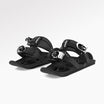













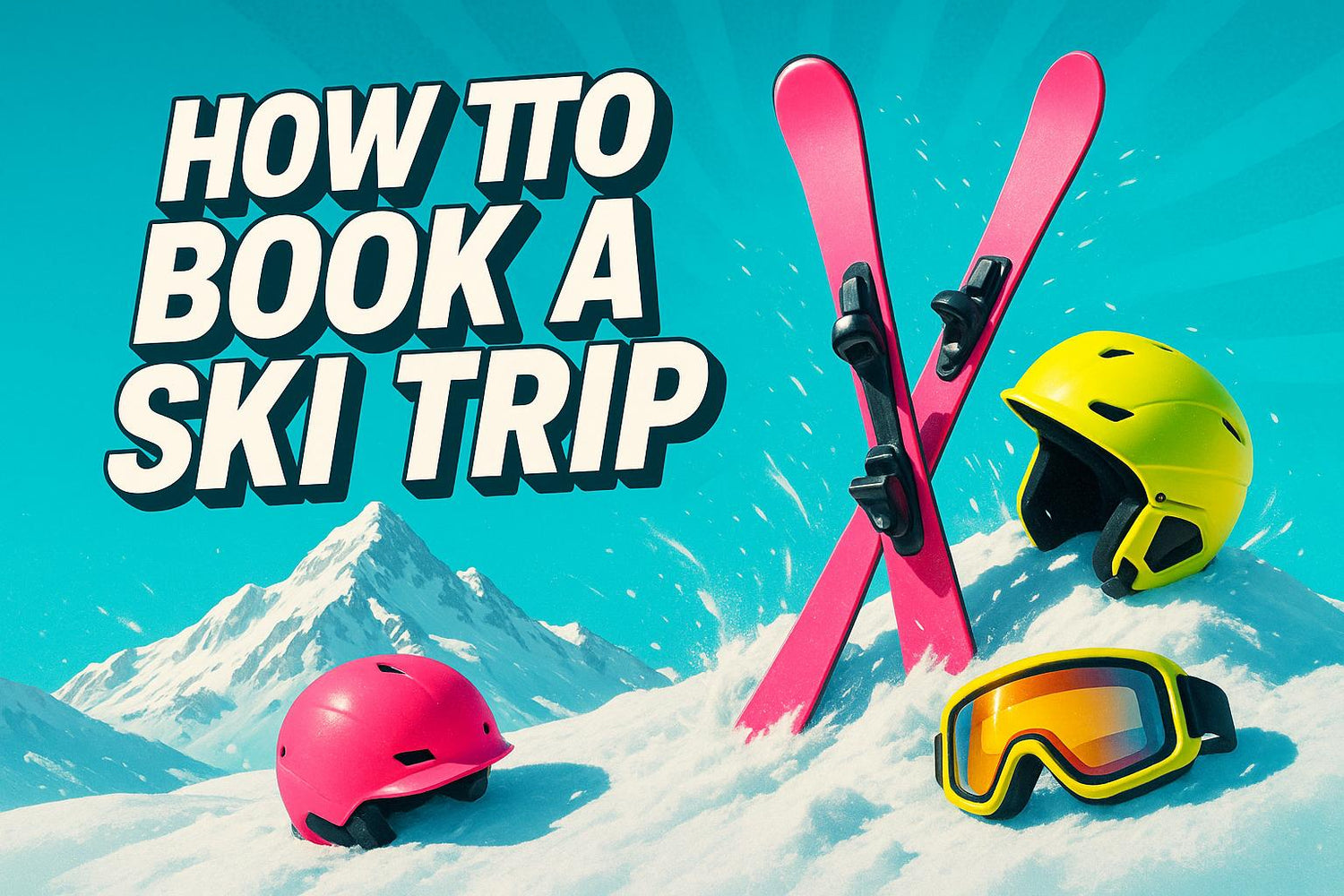
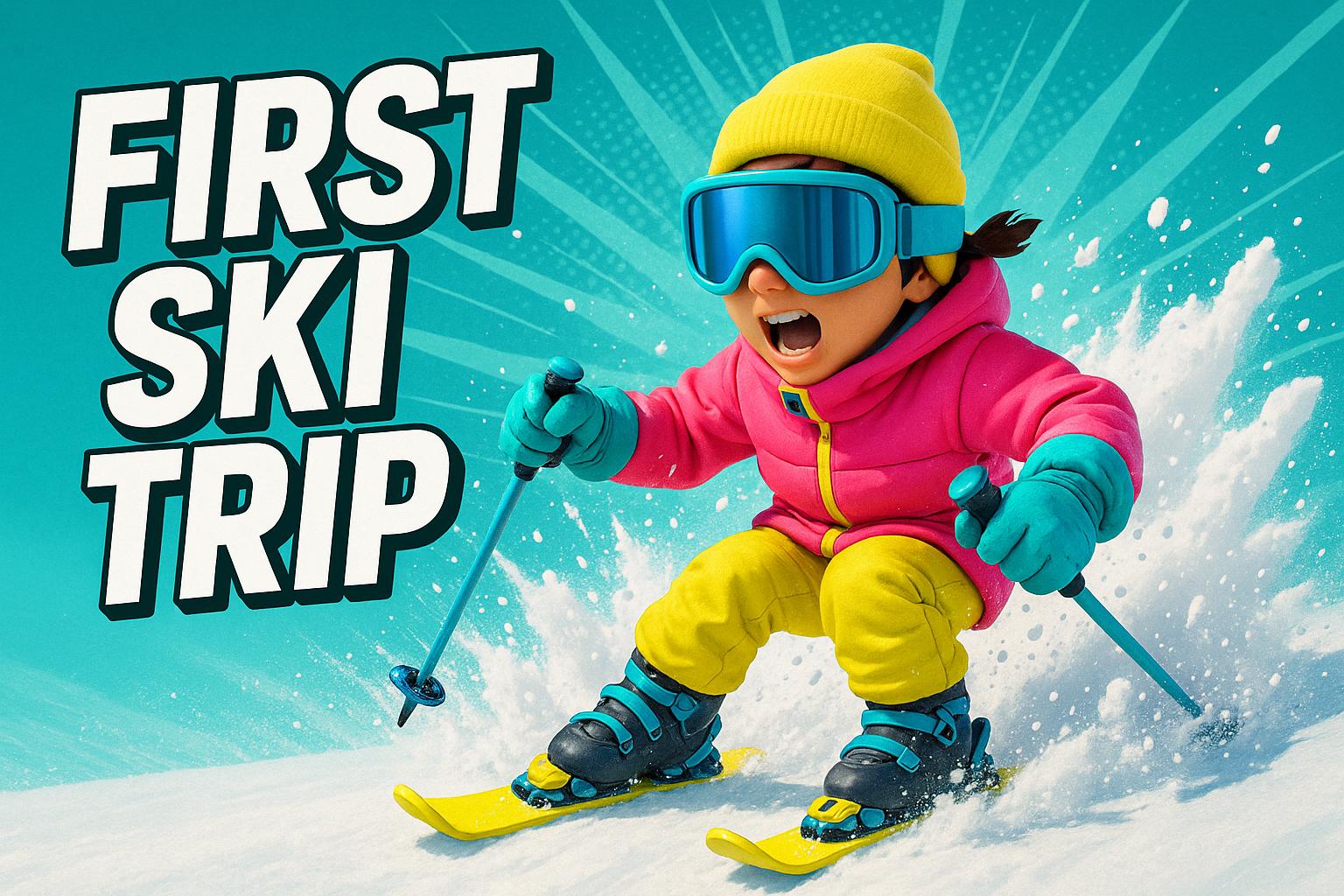
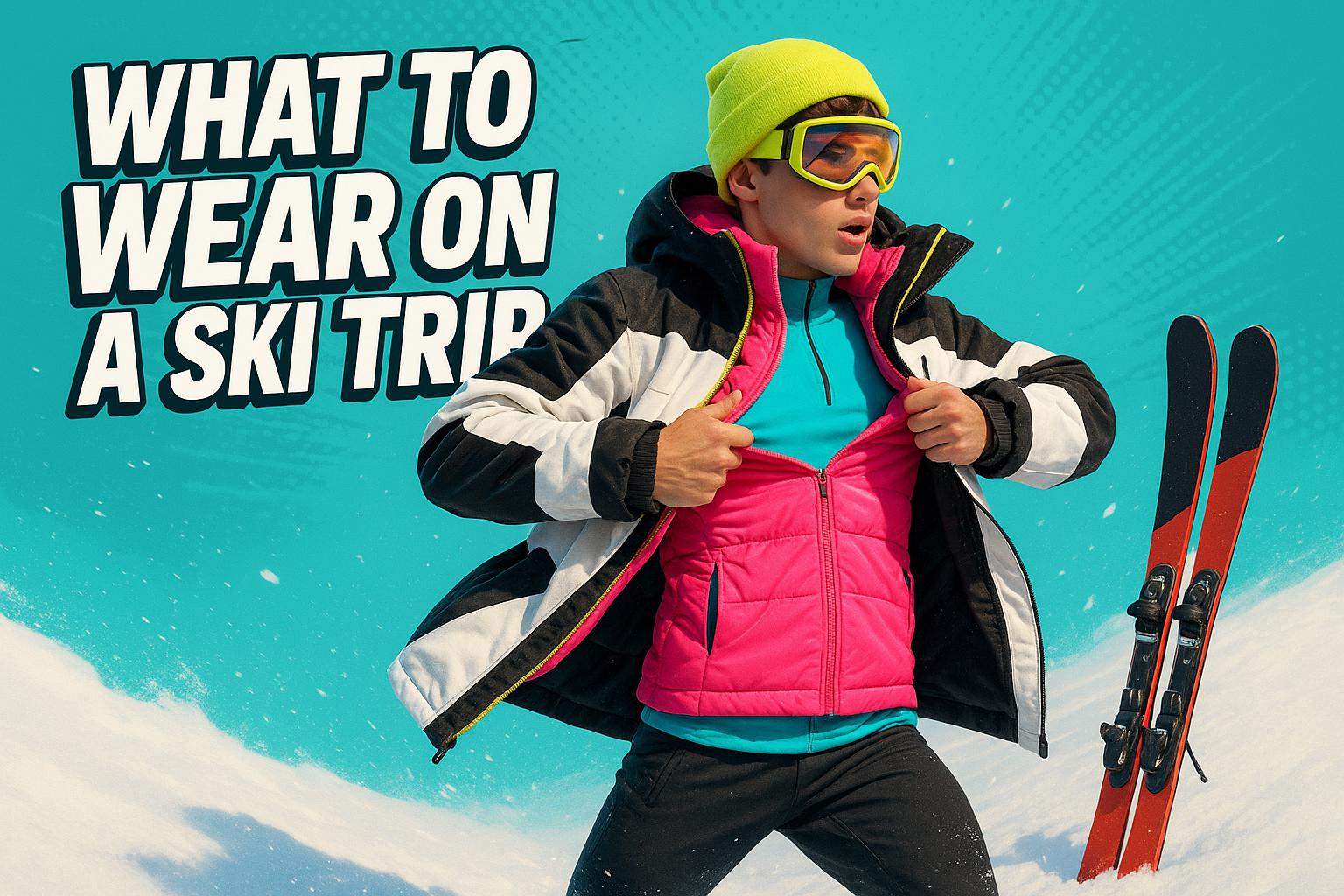




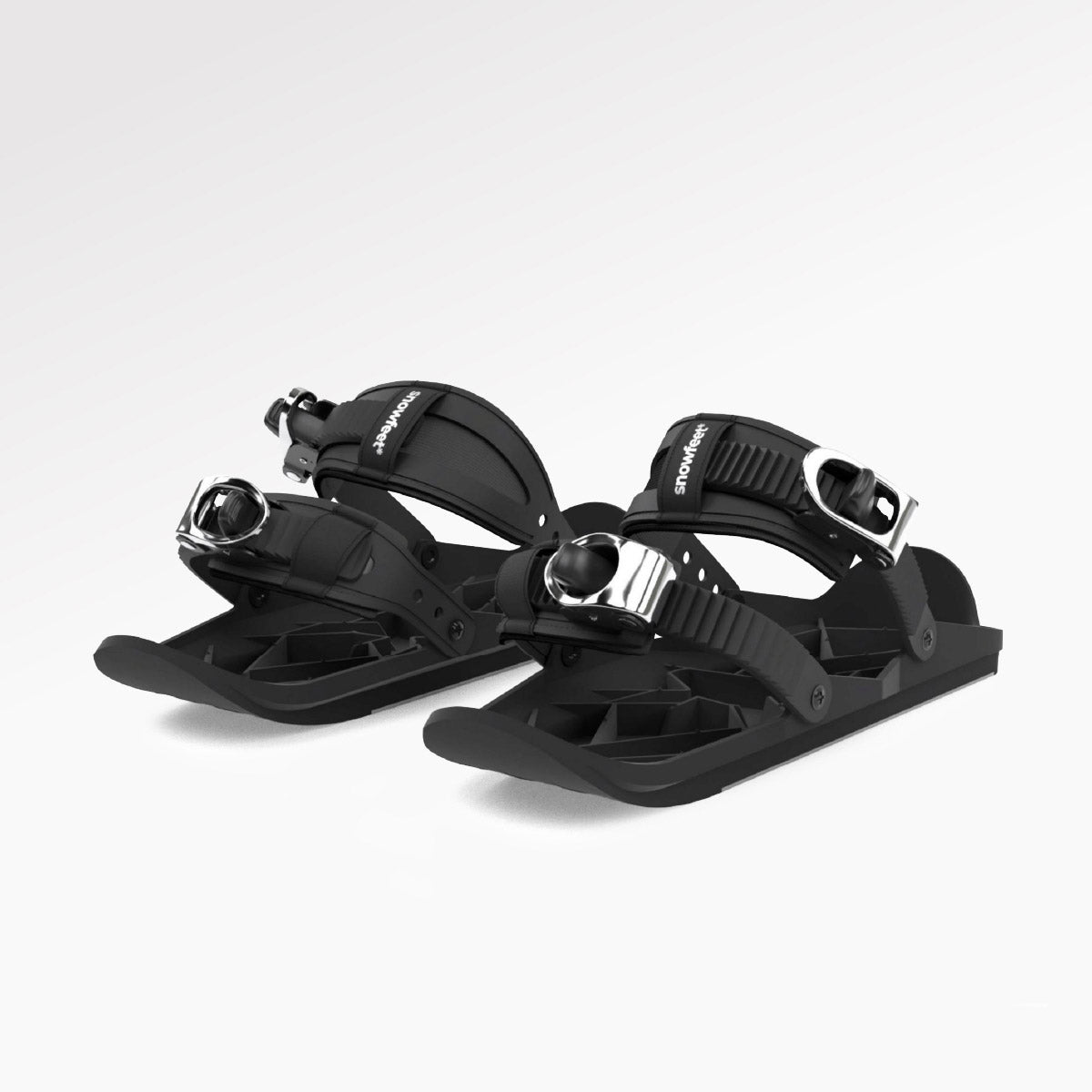
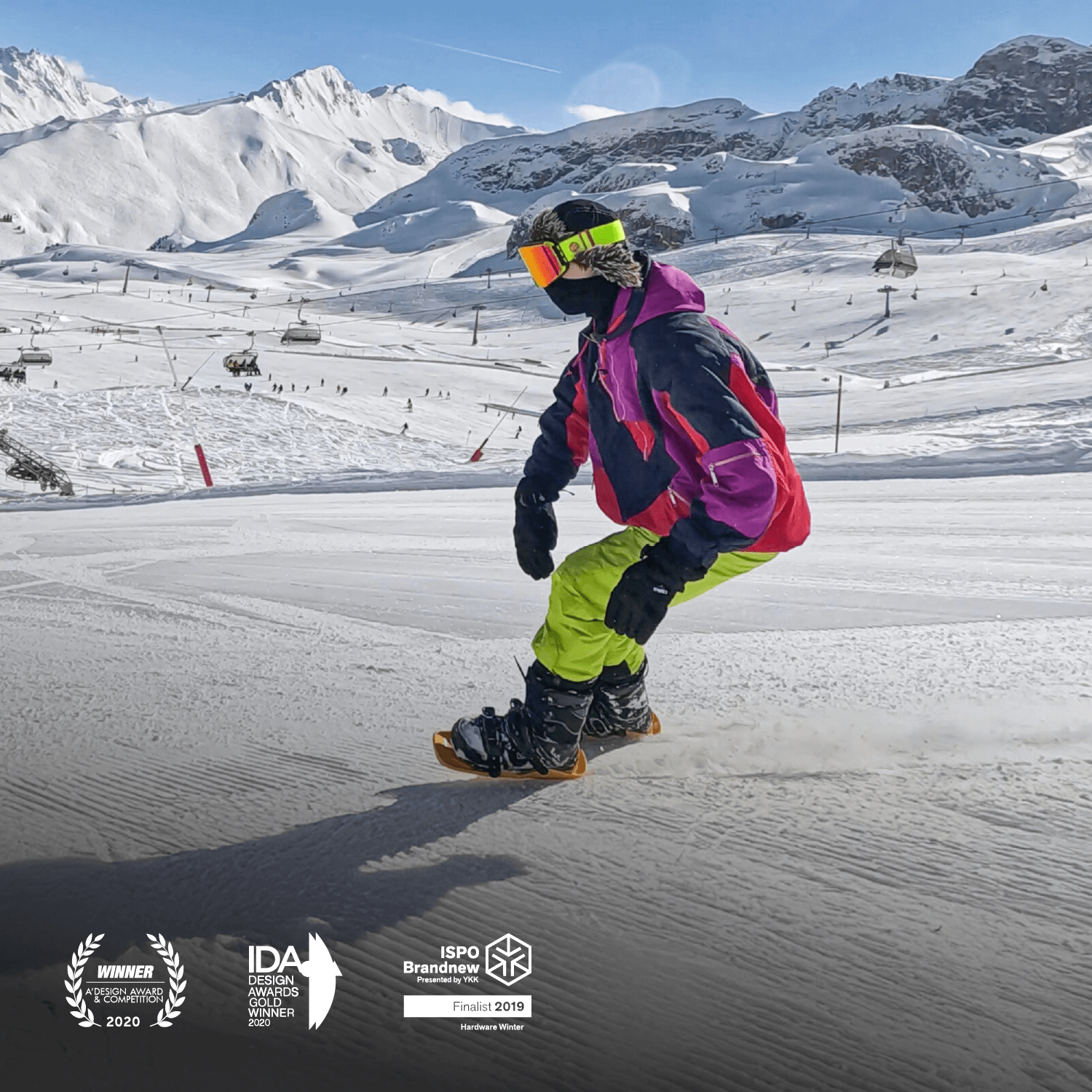




Lascia un commento
Questo sito è protetto da hCaptcha e applica le Norme sulla privacy e i Termini di servizio di hCaptcha.